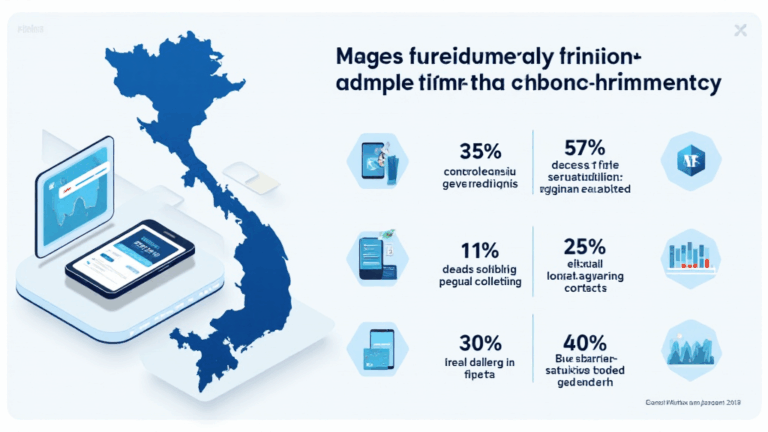Mobile-First Adoption of HIBT in Vietnam
In recent years, Vietnam has emerged as a central player in the global cryptocurrency landscape, with millions of users adopting mobile-first platforms like HIBT (High Integrated Blockchain Technology). This article dives into how mobile-first adoption in Vietnam is reshaping the digital currency landscape and explores the innovations in blockchain technology, especially in the context of tiêu chuẩn an ninh blockchain (blockchain security standards).
Understanding the Mobile-First Trend in Vietnam
With a mobile penetration rate exceeding 170%, Vietnam leads Asia in mobile-first adoption. According to a recent report from HIBT, the number of smartphone users in Vietnam is projected to surpass 80 million by 2025. This dramatic shift in user engagement plays a crucial role in how blockchain and cryptocurrencies will evolve in the market.
As mobile devices enable easier access to digital currencies, it is essential to understand how this growth affects user experience and security measures. Like a bank vault for digital assets, mobile applications must ensure tiêu chuẩn an ninh blockchain to protect users effectively.

Impact of HIBT on Vietnam’s Cryptocurrency Market
The HIBT system offers several advantages, including enhanced transaction speeds and lowered costs, attracting Vietnam’s growing base of tech-savvy investors. Tech consumers, particularly millennials and Gen Z, gravitate toward platforms that not only allow them easy access to cryptocurrencies but also ensure robust security features.
- 71% of Vietnamese respondents in a recent survey said they prefer mobile apps for cryptocurrency transactions.
- The market for cryptocurrencies in Vietnam is set to grow by 1.5 billion USD in the upcoming five years.
- With HIBT’s user-friendly design, adaptation rates have increased by 40% year-on-year.
Key Features of HIBT and How They Align with Security Standards
HIBT emphasizes security and user-friendliness. An important aspect of this platform is its alignment with tiêu chuẩn an ninh blockchain. Features that contribute to a secure experience include:
- Decentralized Transactions: Ensuring no single point of failure.
- Multi-Signature Authorization: Requiring multiple approvals for significant transactions, enhancing security.
- Robust Encryption Protocols: Protecting users’ sensitive data against breaches.
Real Data on User Growth in Vietnam’s Crypto Space
To illustrate the rapid growth of the cryptocurrency market in Vietnam:
| Year | User Growth Rate (%) | Market Size (Million USD) |
|---|---|---|
| 2023 | 20 | 350 |
| 2024 | 30 | 500 |
| 2025 | 40 | 850 |
Data sourced from HIBT indicates that user engagement is also increasingly driven by mobile platforms. Security must continue to be at the forefront to sustain this momentum.
Future Prospects of HIBT and Mobile-First Strategies in Vietnam
As Vietnam’s economy transitions into a new stage with the increasing focus on digital finance, the demand for secure and efficient blockchain technologies like HIBT will grow.
Here are key prospects to watch for:
- Increased investment in blockchain education, leading to more informed crypto users.
- Collaboration between government and the tech industry for implementing tiêu chuẩn an ninh blockchain.
- Growth of local projects focused on mobile-first adoption that bolster Vietnam’s reputation in the tech world.
Conclusion: Embracing Mobile-First with HIBT in Vietnam
As we have explored, Vietnam is uniquely positioned to lead in mobile-first adoption within the cryptocurrency landscape. The growth trends illustrate a promising future, especially with the strong adoption rates of HIBT amid a focus on strict security standards. With an estimated increase in the number of mobile users, the fusion of technology and finance will likely propel Vietnam to the forefront of the global digital currency system.
To stay updated on the latest in cryptocurrencies, including detailed insights on mobile-first strategies, keep an eye on ccoinshop.
Written by Dr. Nguyen Hoang, a blockchain security expert and author of over 30 papers in digital finance, with a focus on auditing high-profile projects.




